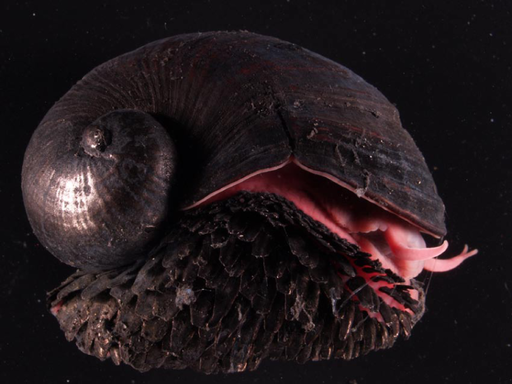Media
Volcano Snails, The Credible Hulk, and a Model Correction
A science social media feed shows us how to fix inadvertent misinformation.
Posted November 11, 2022 Reviewed by Ekua Hagan
Key points
- Even the most careful science communicators can sometimes inadvertently mislead.
- Corrections of misleading statements don’t always work; "belief echoes” are ideas that persist even after one has read a correction.
- Research shows that the most effective corrections retract the misinformation, provide an update, and explain why the misinformation occurred.
The Credible Hulk is a self-described “[p]ro-science skeptical activist, musician, and polymath promoting science education and smashing pseudoscience and denialism” and posts fun facts and memes on Facebook. The Credible Hulk is also a role model for science communicators everywhere because if you write, blog, tweet, or post about science, you’re bound to be less than clear eventually, as Credible Hulk recently was in a post about volcano snails. “Those snails are metal af and I mean that literally,” Credible Hulk began. (The “literally” part with respect to metal is a reference to the iron sulfide and pyrite on the snails’ feet that provides protection from predators.) But then they wrote: “Has scales, lives around extreme heat, protected by iron, that’s a dragon.”

Why Did People Get the Wrong Idea?
The Credible Hulk was joking about dragons, of course. But the original post made it sound as if the snails’ usual habitat is extremely hot, and that the scales protect them from the extreme heat as well as from predators. The Credible Hulk further included the detail that volcano snails are found “in only three places in the world, around three hydrothermal vents about 3,000m deep in the Indian Ocean,” where temperatures range from 240 to 375 celsius.
This description clouded the reality that although volcano snails live near such temperatures, they actually live in temperatures of about 5 celsius. To their credit, Credible Hulk acknowledged that their post had been misleading. They shared that a follower pointed out the lack of clarity—and provided sources, to boot. Other followers’ comments made it clear that there was general confusion. In a refreshingly frank admission of inadvertent miscommunication, Credible Hulk wrote: “I realized upon rereading the post that I had failed pretty miserably at explaining it clearly.”
The Credible Hulk’s Science-Based Correction
The Credible Hulk didn’t simply correct the post, noting that it had already been viewed and shared so many times that followers were unlikely to return to the post to notice the correction. Instead, they prominently reposted it so it would stand alone and be atop their feed. “So here we go again,” they wrote. “Hopefully better this time. You will notice how I subtly edited the meme.” The subtle edit crossed out “lives around extreme heat” and scrawled “yes, but no.”
Whether Credible Hulk did it intentionally or not, they followed the science in their correction—and we’d like to think that such a good science communicator indeed used evidence in their correction by design. We have previously defined misinformation as unintentional (as opposed to disinformation or malinformation, which are respectively benignly intentional and malevolently intentional), and there was certainly no intention to mislead here. But misinformation is misleading regardless of intention. Political scientist Emily Thorson described a phenomenon called “belief echoes,” ideas that are ingrained and can persist even after a correction. That’s why a careful correction of misleading information is so important. Thorson notes that belief echoes can “be minimized through corrections that not only state that the misinformation is wrong, but also describe why it emerged in the first place.”
Supporting Thorson’s conclusion, a meta-analysis (an amalgamation of many different studies, a research technique we have described before) highlighted that effective corrections can’t be subtle. The most effective corrections retract misleading information, provide updates that clarify the earlier misinformation (even if inadvertent), and explain why the misinformation occurred in the first place. The meta-analytic researchers wrote, “If the information is retracted without providing an alternative explanation, people’s understanding of a topic may not feel coherent, leading them to deny the new information and reinstate the beliefs that existed before the retraction.” The coherence comes from the narrative about what initially led to the misinformation. It’s more than just replacing misinformation with accurate information.
The Credible Hulk did exactly that. They came clean about the confusion their original post caused, explained why it had been confusing, provided a clear update, and reposted all of that to the top of their feed—providing a model for us all in the process.
References
Thorson, E. (2016). Belief echoes: The persistent effects of corrected misinformation. Political Communication, 33(3), 460-480. https://doi.org/10.1080/10584609.2015.1102187
Walter N. & Murphy S. T. (2018). How to unring the bell: a meta-analytic approach to correction of misinformation. Communication Monographs, 85(3), 423–441. https://doi.org/10.1080/03637751.2018.1467564


